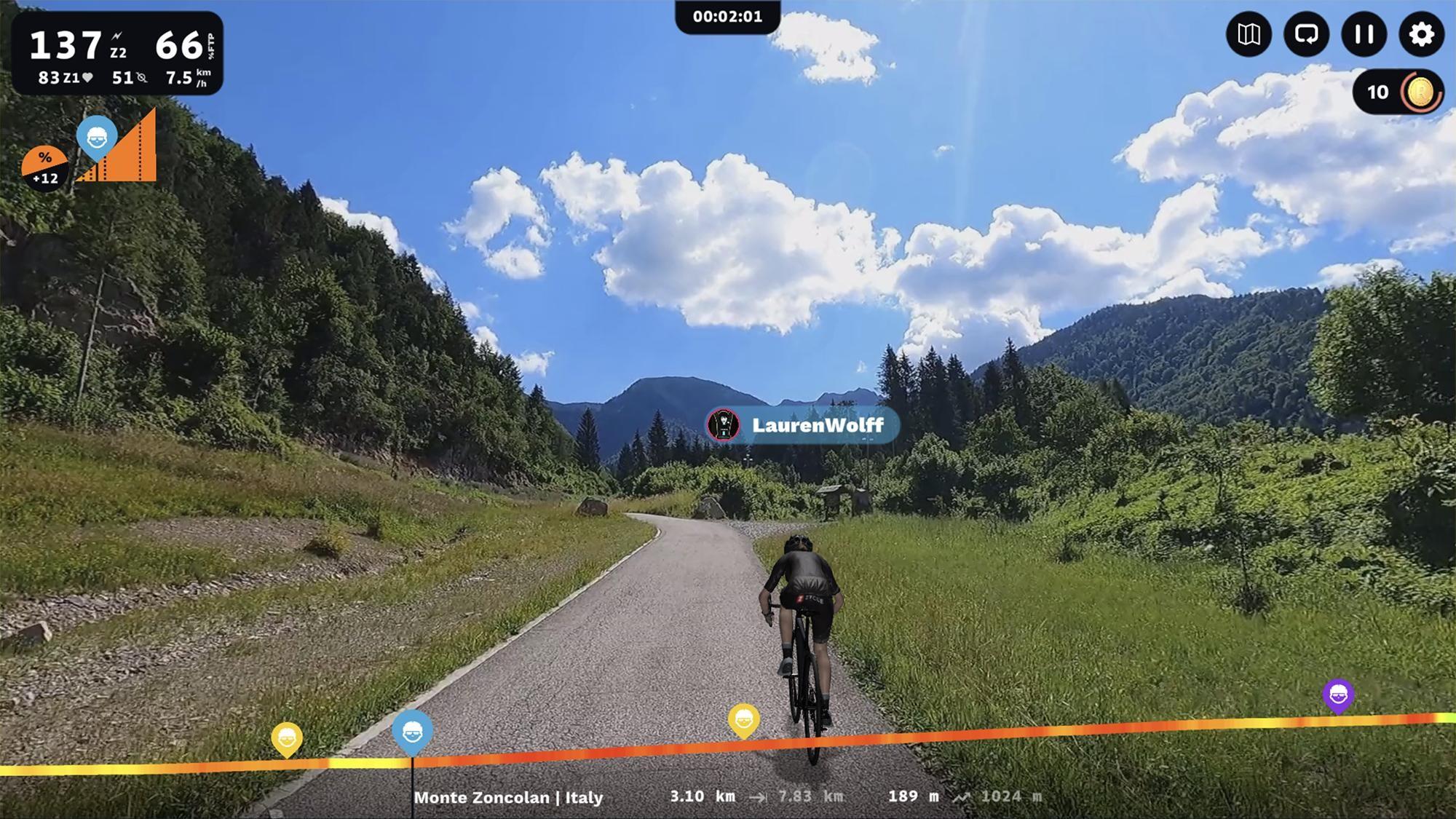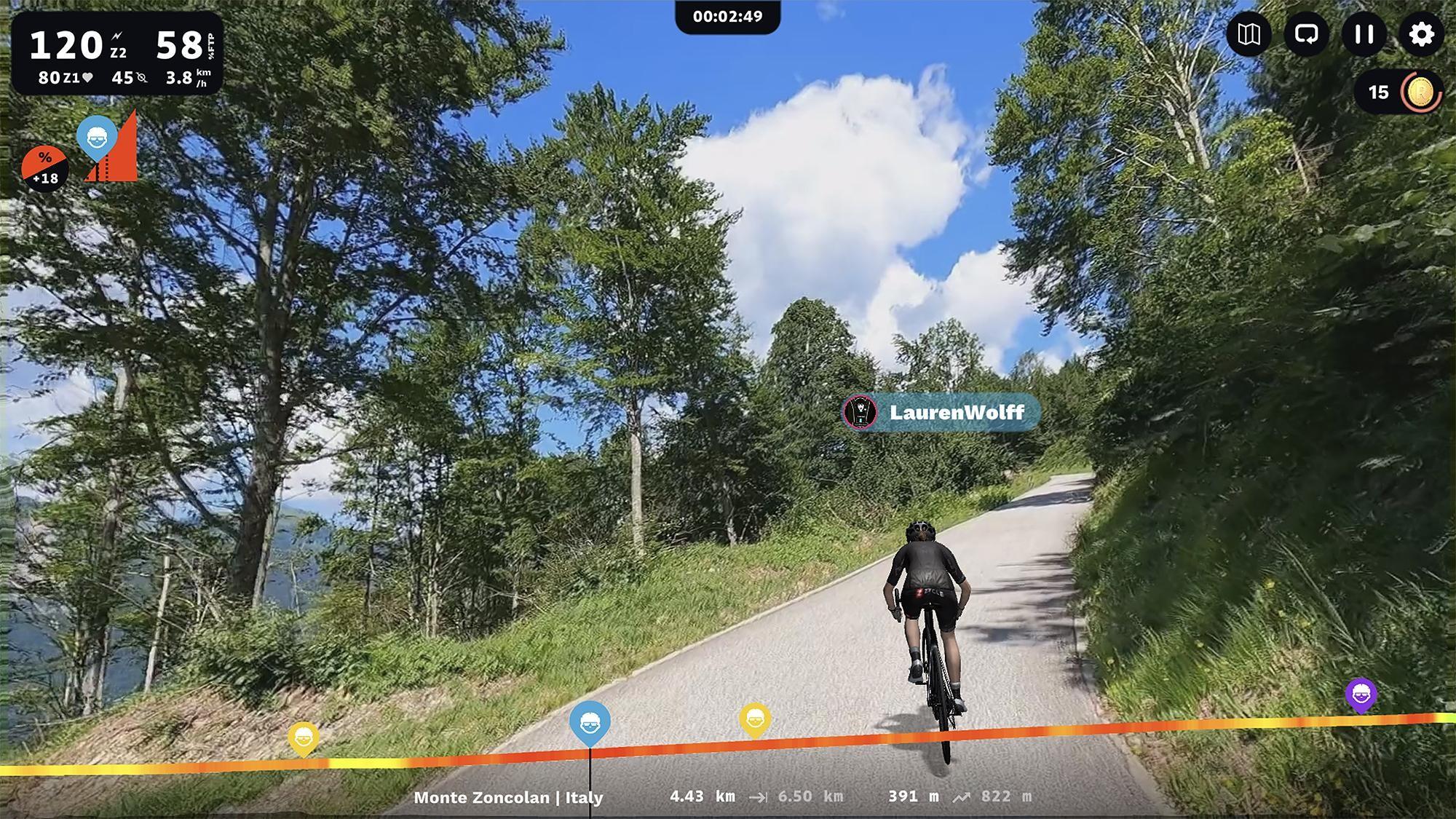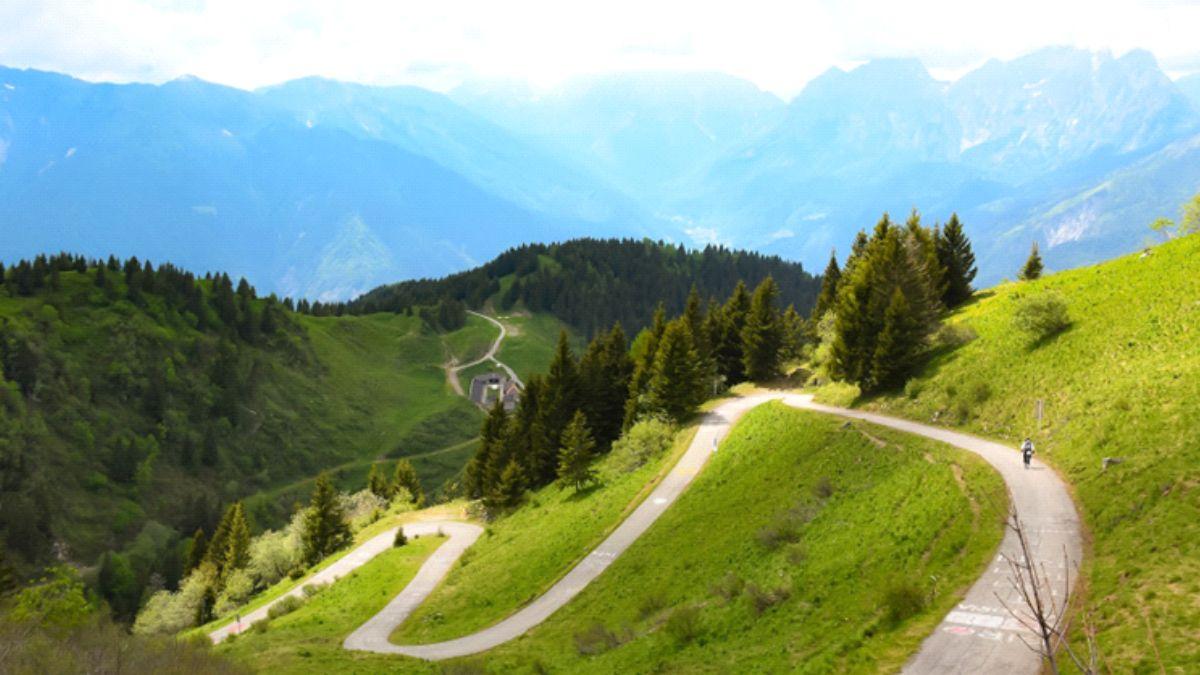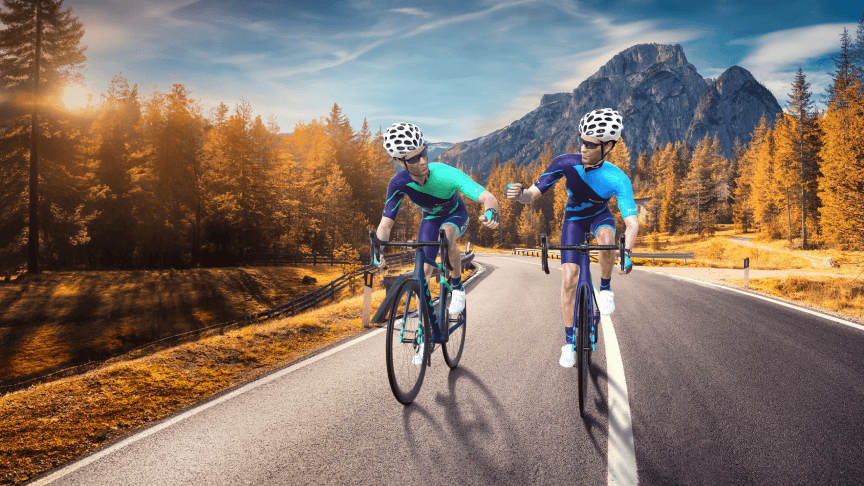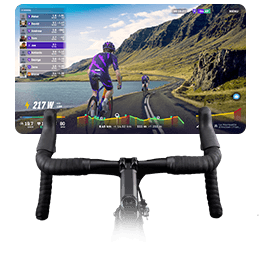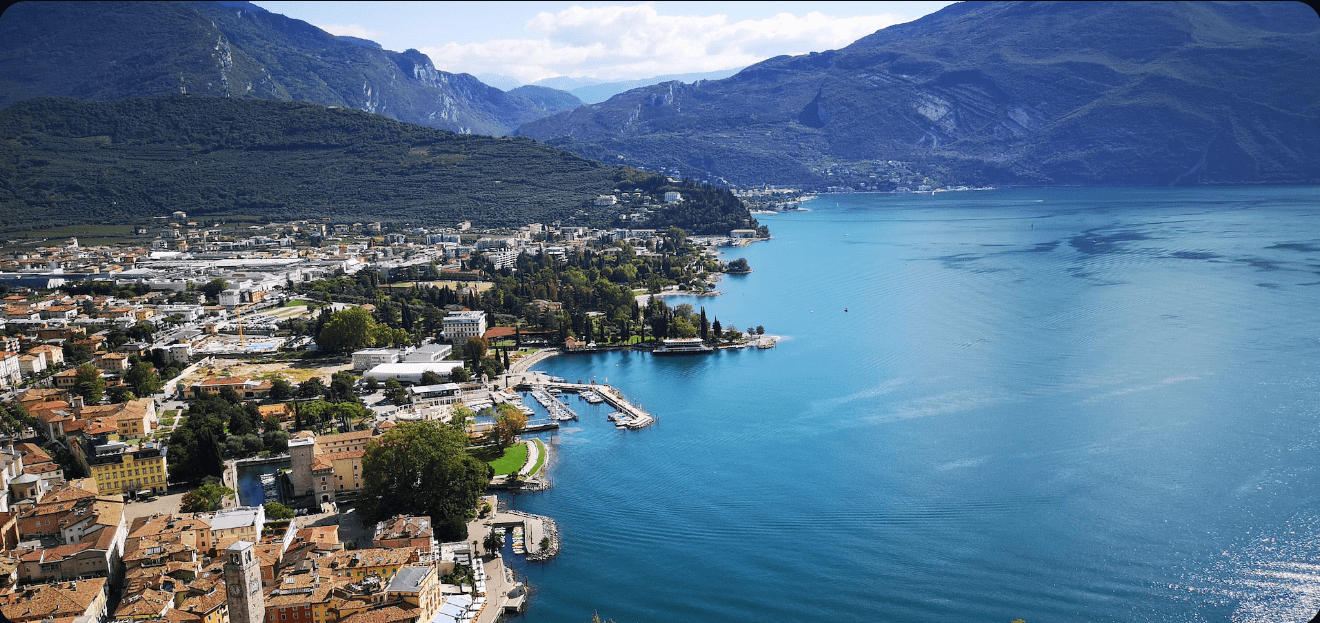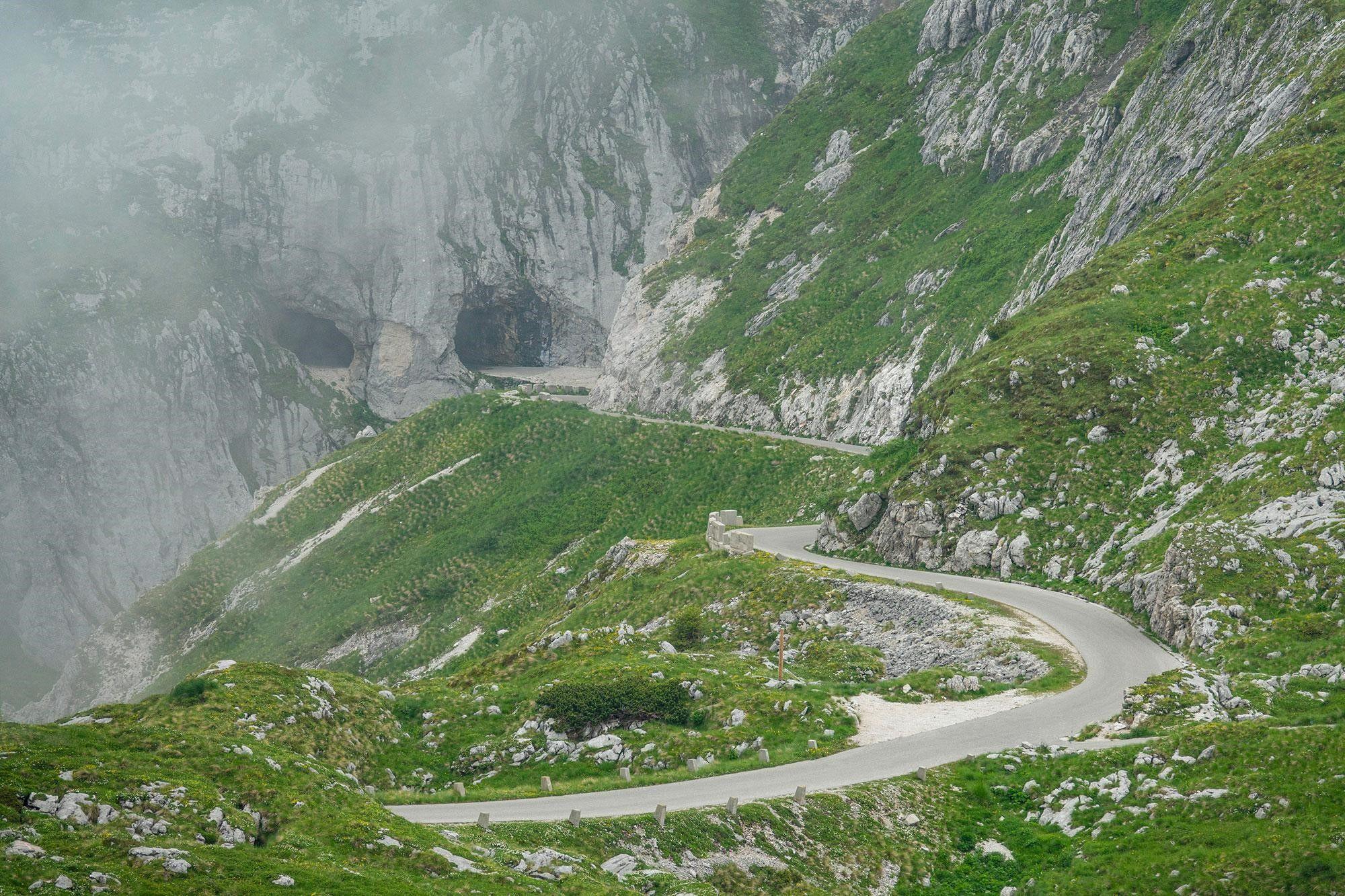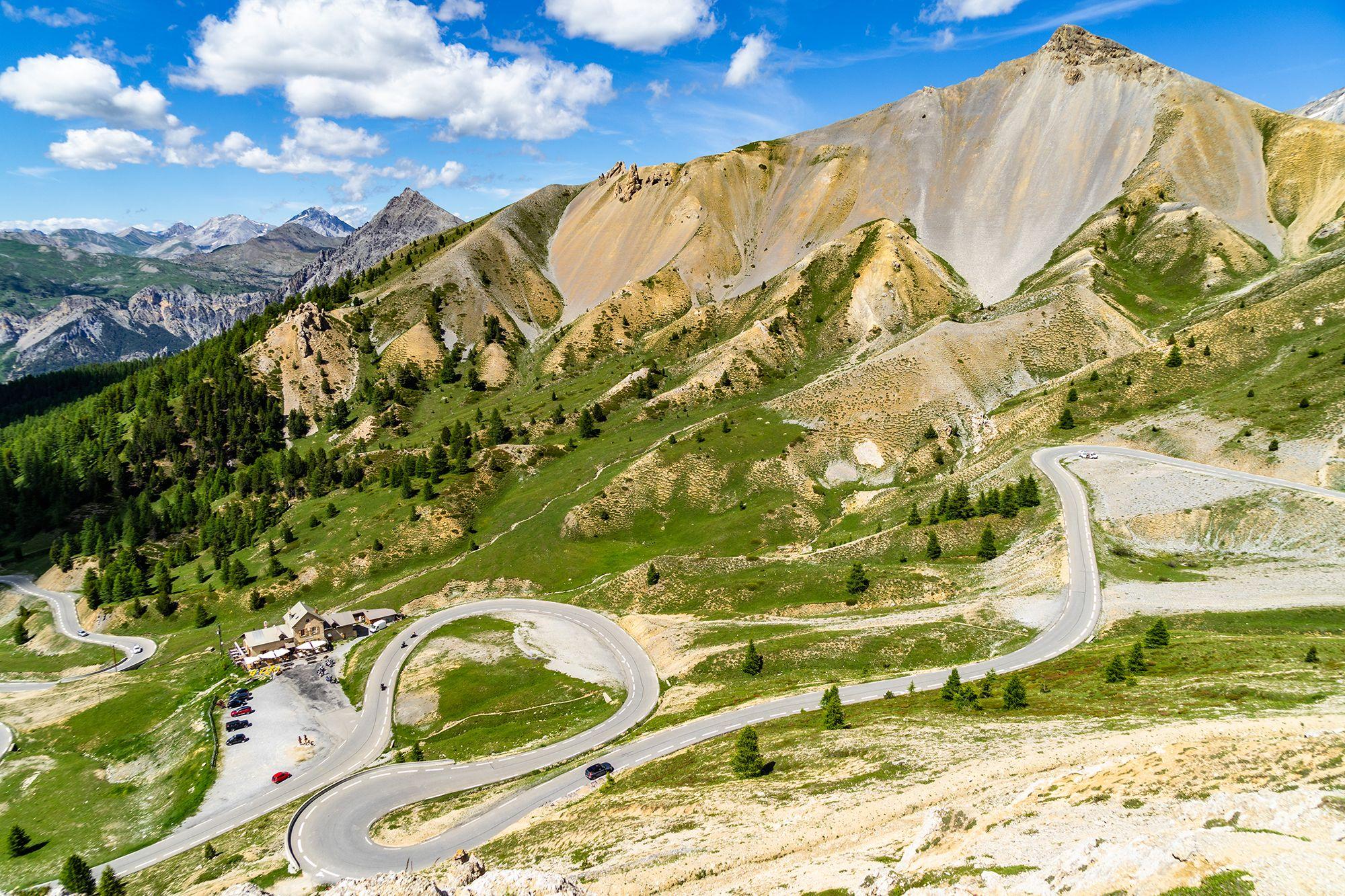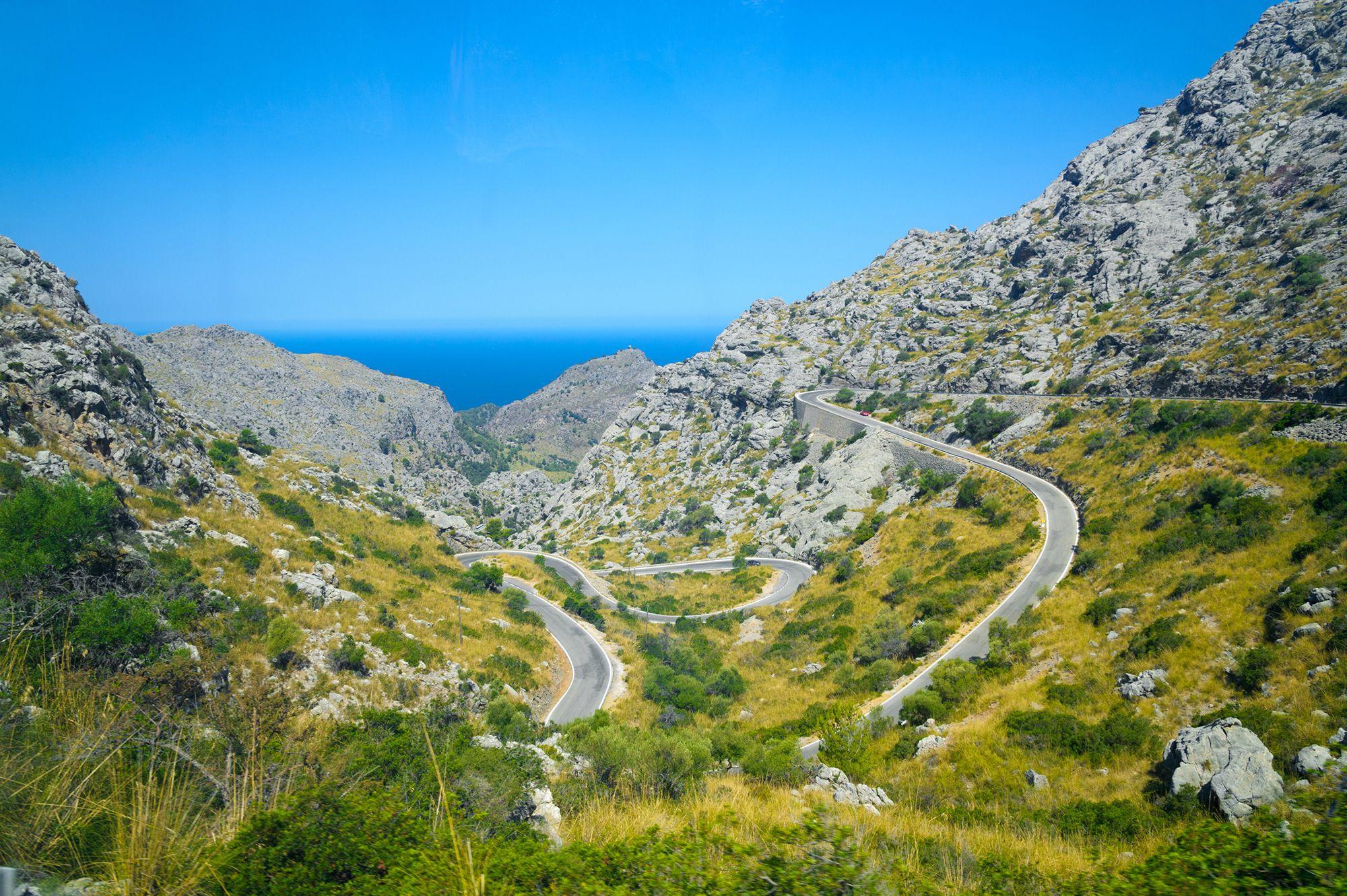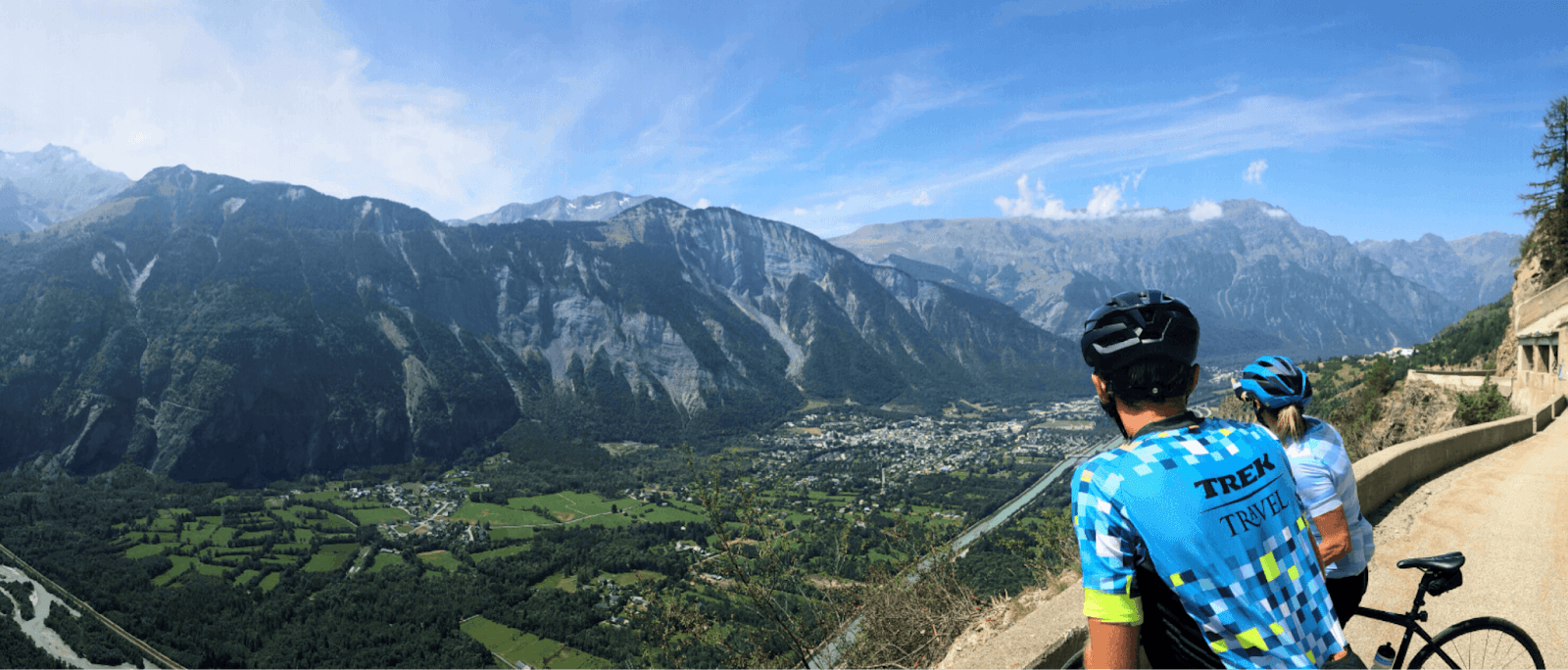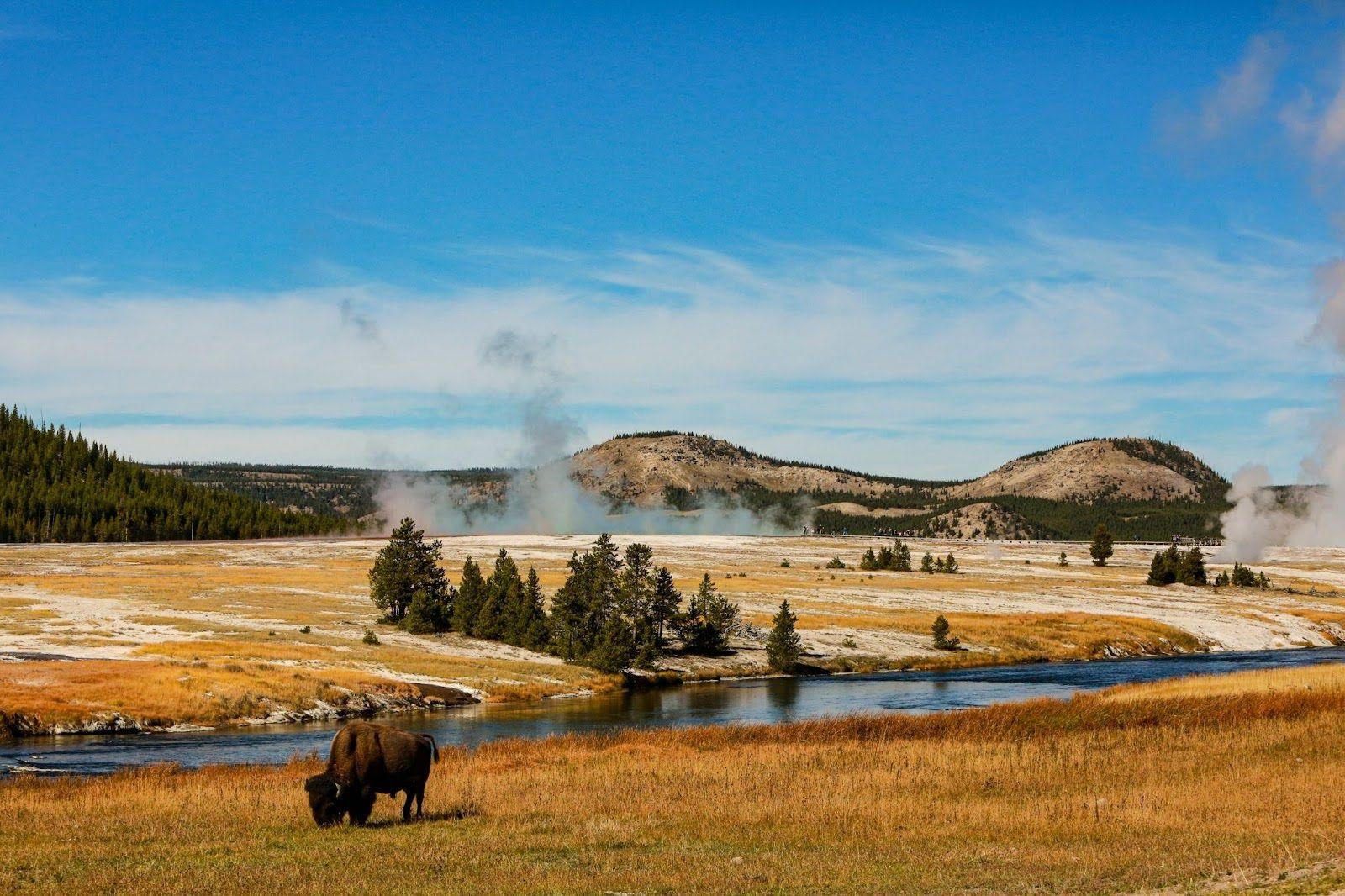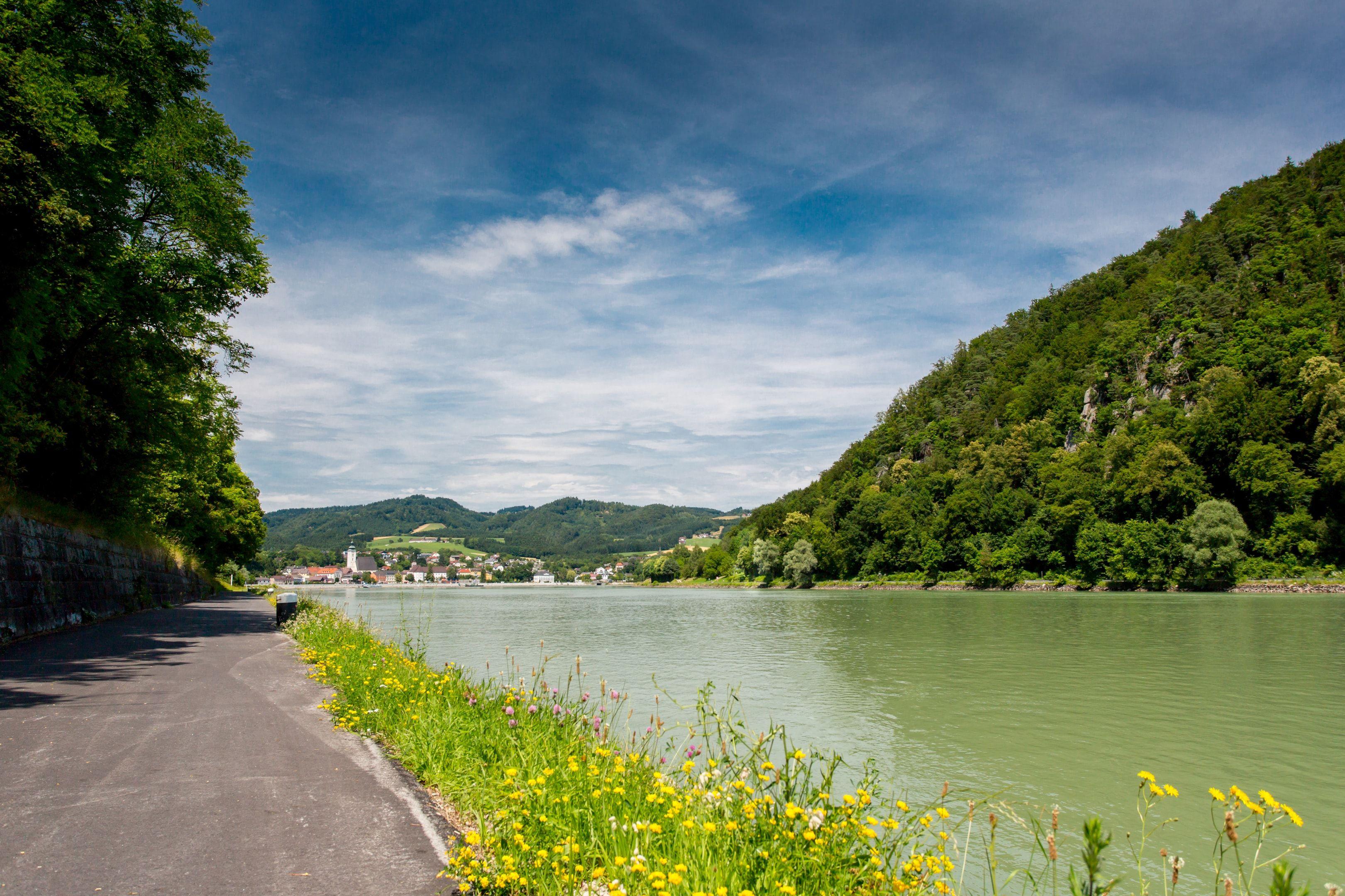No zen on the mighty Monte Zoncolan
Situated in the far northeast of Italy, one can climb the Monte Zoncolan mountain from three sides: Ovaro from the west, Sutrio from the east, and Priola, an original old road that Sutrio replaced. We will focus on theZoncolan from the most brutal west side on ROUVY from Ovaro.
 Climbing the Monte Zoncolan on ROUVY on a narrow and winding road
Climbing the Monte Zoncolan on ROUVY on a narrow and winding road
About the route
From the small commune of Ovaro in the ancient and historical Gorto valley, the narrow road goes up 10.1 kilometres at an average gradient of 11.9%, an elevation gain of 1,210 metres (3,970 ft) with a maximum slope of 22%. The climb proper begins at the start of the switchbacks from Liariis, 6km in and 8.5 kilometres from the summit. So it is important not to overexert on the first small climb before the real hard work starts. Just after you pass the village, the road ascends through a pine forest and gains 900 metres in the following 6 kilometres, averaging 15%. The narrow winding road takes you through three short, very narrow and lit tunnels before the final series of switchbacks immediately below the summit - the last kilometre averages at 10%.
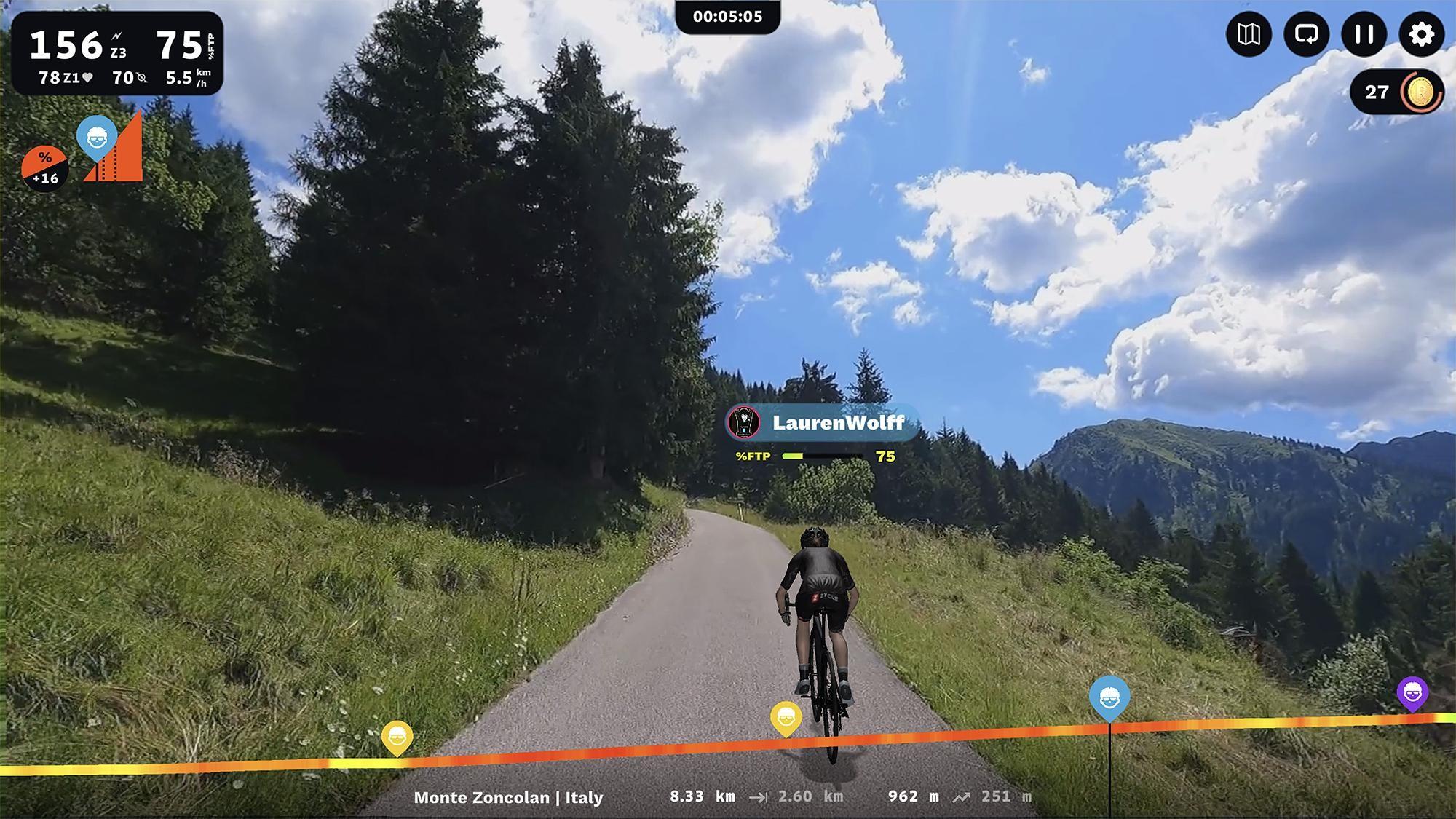 Climbing the Monte Zoncolan on ROUVY with beautiful views through the trees
Climbing the Monte Zoncolan on ROUVY with beautiful views through the trees
Historical battles up the Zoncolan
Spare a thought, though, for the pro peloton and especially the sprinters in the pack who are much heavier than the climbers, that on a regular stage, this would not be the only climb for the day but one of many ascents to give an accumulation of between 3,000m and 4,000m of climbing on that Giro stage. Hopefully, with that in mind, you will be satisfied with only this climb on your to-do list.
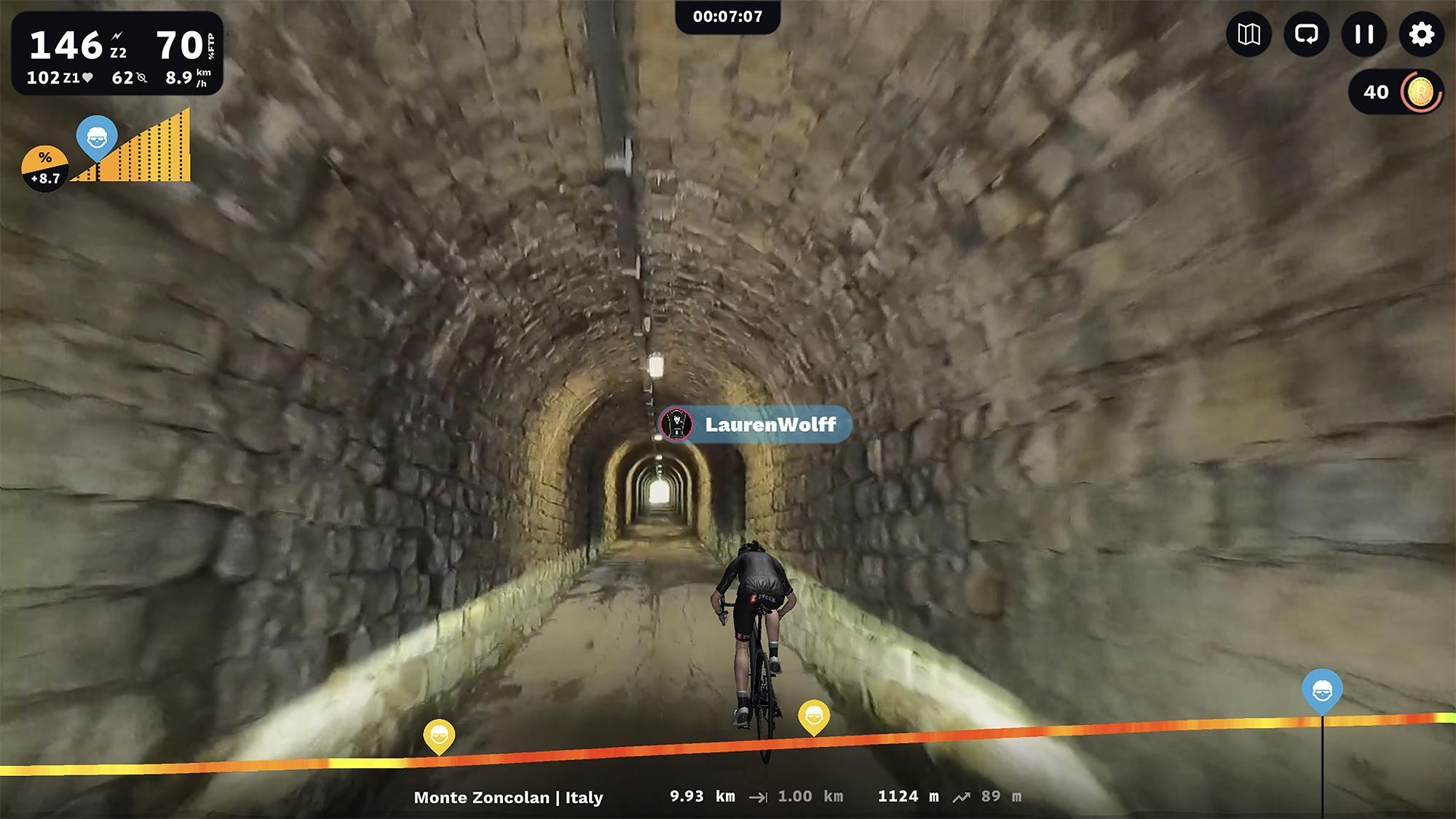 Ride the Monte Zoncolan on ROUVY making my way through one of the narrow tunnels
Ride the Monte Zoncolan on ROUVY making my way through one of the narrow tunnels
The Zoncolan is relatively new to feature at the Giro d'Italia. It first featured in 2003 from the less severe side of Sutrio when Italian Gilberto Simoni took the win. In 2007, the Giro returned to the ascent from the Avaro side, and he won yet again, temporarily giving the climb the nickname Monte Simoni. The 3rd time the pros rode it was in 2010, and Ivan Basso took the victory. The following year, the Zoncolan had a new winner, Igor Anton, who beat Alberto Contador, the eventual winner of that year's race. Then in 2014, Australian Michael Rogers raced to take the first place in the stage, and Chris Froome took the mountain finish in 2018. In the women's victories, Annemiek van Vleuten won here in 2018.
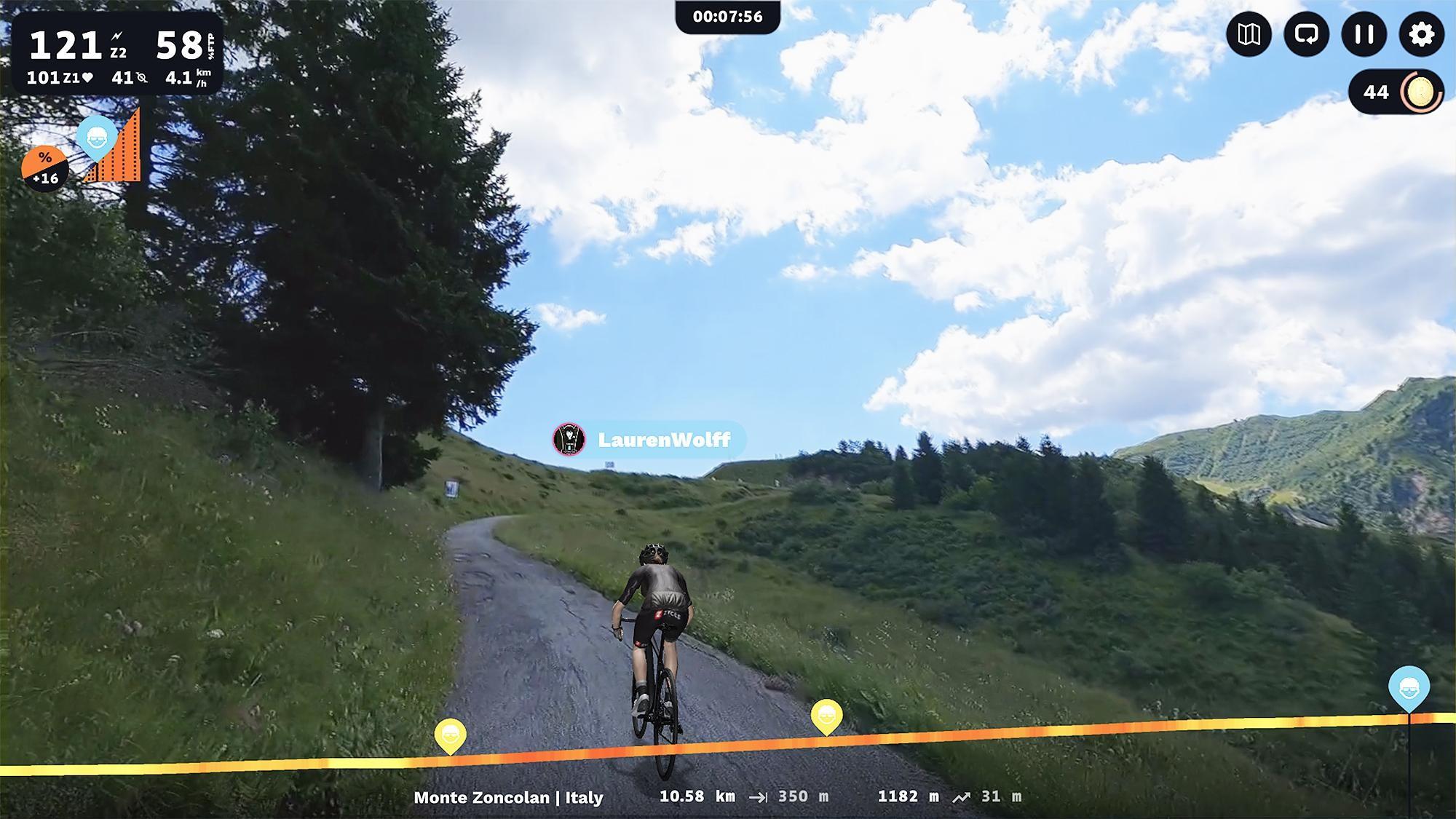 Climbing the Monte Zoncolan on ROUVY and almost reaching the summit
Climbing the Monte Zoncolan on ROUVY and almost reaching the summit
The Zoncolan route on ROUVY details:
Distance 10.93 km
AVG grade 11 %
Ascended 1,213 m
Max grade 19 %
Estimated time to complete:
3W/kg: 1h15 min
2W/kg: 1h50 min
Are you brave enough to conquer another steep climb of the Grand Tours? If yes, and you are well-trained with an optimal W/kg ratio, keep reading and learn more about the next brutal gradient challenge before you try it.
The arduous Angliru
We head next to Gamonal, Asturias, in northern Spain—the Alto de l'Angliru with an average gradient of 10% and a maximum of 23%. The climb gets steep from around 5,5km, after which you won't get slopes less than 13%, and the last 3km are the steepest. It is a climb of two halves over 12,4 km with 1,230 m of climbing, the second half being the toughest.
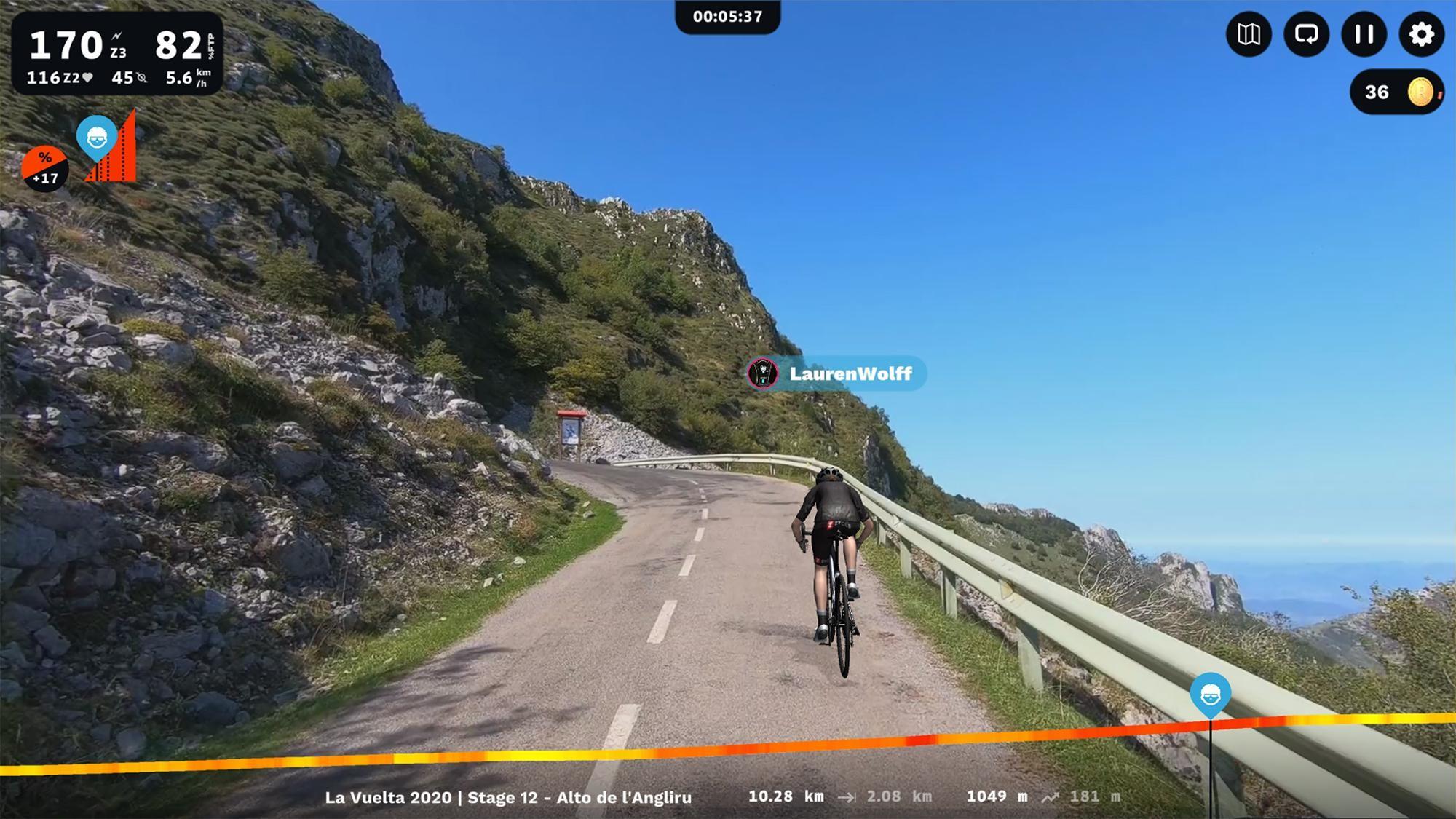 Riding the Angliru climb and almost reaching the summit on ROUVY
Riding the Angliru climb and almost reaching the summit on ROUVY
Legendary stories up the Angliru in history
The Alto de l'Angliru, also known by the notorious name of El Infierno, is another contender for one of the steepest and most unrelenting climbs in professional cycling and race organisers frequently use in the La Vuelta stage race. The Angliru featured first in its introduction in 1999, won by José Maria Jiménez after reeling in Pavel Tonkov one kilometre from the summit.
 Riding the Angliru climb on ROUVY
Riding the Angliru climb on ROUVY
Then, in 2002 it rained on Stage 15, and much controversy followed when riders got trapped behind team cars that stalled and skidded on painted names because of no grip at such gradients. Team cars could not reach riders with flat tires, so riders had to, as a result, keep riding on flats. The conditions created an extra burden already heaped on top of an impossibly tricky ascent to manage.
Alberto Contador won it twice in 2008 and 2017, the latter date being his last Grand Tour firing off his well-known pistol gesture at the finish line. The most famous battle was between Vincenzo Nibali and 41-year-old American Chris Horner was in 2013, after numerous attacks by Nibali with the two battling it out together, locking horns in a manic setting: mist, the mayhem of the spectators and struggling camera motorbikes trying to remain upright and hooting at the converging and manic crowds. Having paid the price for his multiple attacks, Nibali could no longer hold the pace. This showdown resulted in a highly motivated Horner defending and retaining the red leader's jersey on the cruel last mountain stage of 2013 and going on to win La Vuelta.
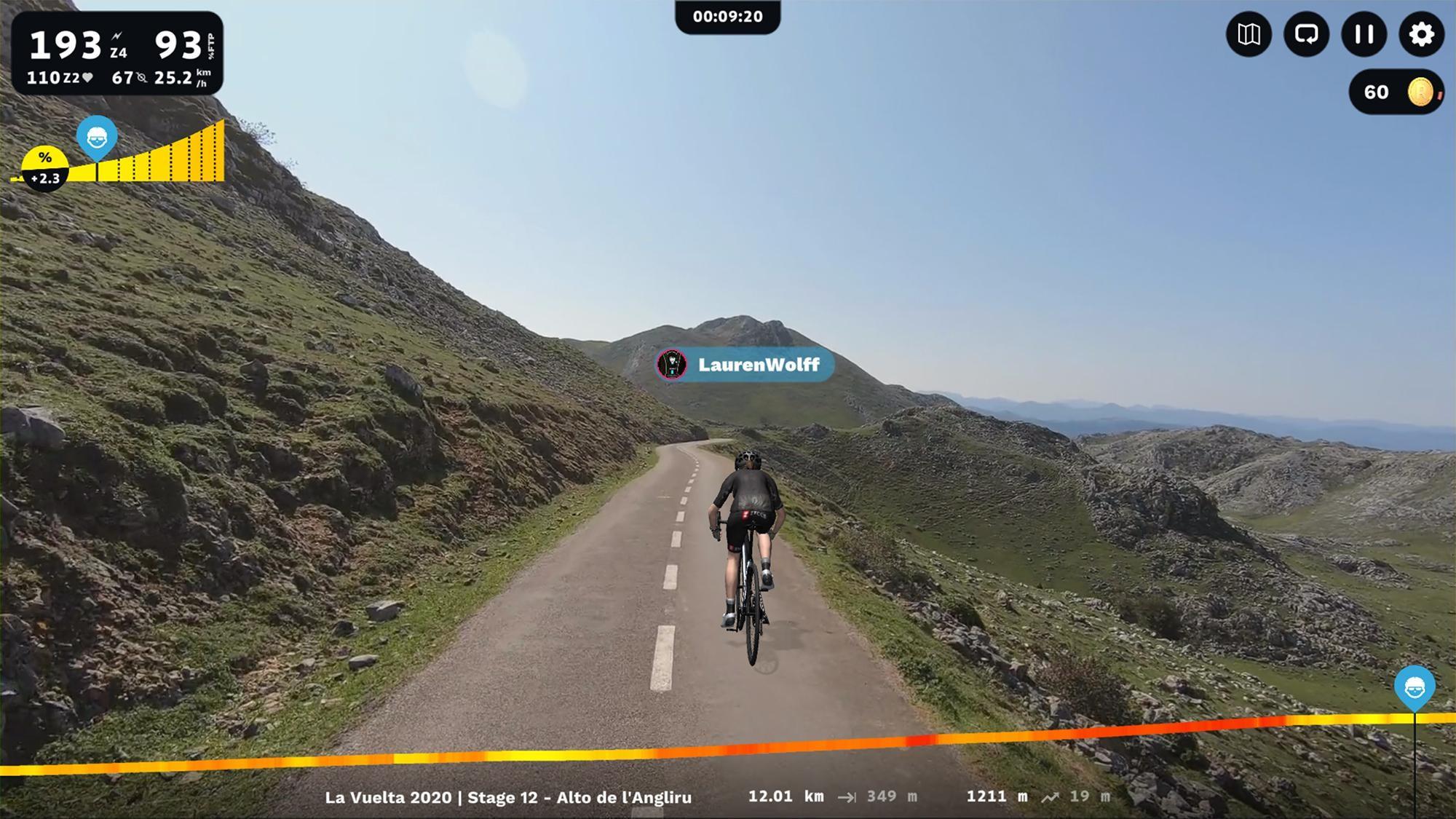 Above: Near the end and over the summit of the Alto de l’angliru on ROUVY
Above: Near the end and over the summit of the Alto de l’angliru on ROUVY
You can read more about the location and how to ride the Angliru in my article on La Vuelta routes.
Estimated time to complete (if you dare):
3W/kg 1h19 min
2W/kg 1h55 min
The mythical but merciless Mortirolo
Next, we head to the Lombardy region of northern Italy and ascend what was once a goat track, the narrow and dense forest-lined road of the Passo Mortirolo from Mazzo di Valtellina also known as the Passo della Foppa. This side is the most famous and most frequently ridden side in the Giro. ‘Foppa’ originates from the Latin fovea and means a cutting in the rock, a passage through the mountain. One gets glimpses of the Valtellina valley through the trees now and again and sometimes views opening up to short pasture areas and in real life the main sound you'll probably hear will be your heavy breathing and the birds in this quiet and peaceful setting.
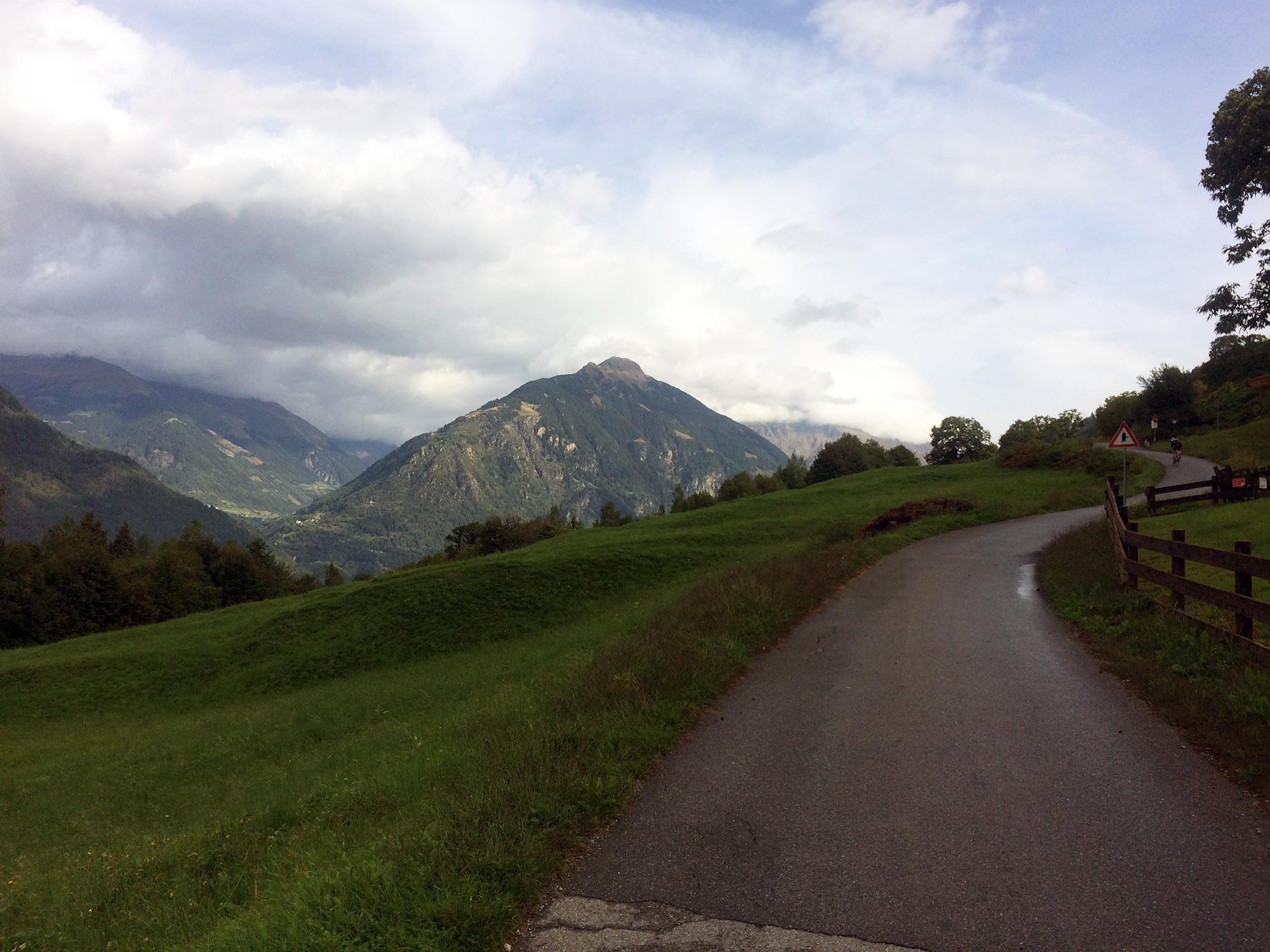 Above: A photo I took while climbing the Mortirolo in Lombardy, northern Italy showing some pasture
Above: A photo I took while climbing the Mortirolo in Lombardy, northern Italy showing some pasture
The Mortirolo is a must-do on every avid cyclist's bucket list of iconic but arduous climbs. One can approach the top from four sides: The most brutal side is from Mazzo di Valtellina, then also there is the side from Grosio, Edolo and Tovo di Sant'Agata. These are tough but not as steep.
 Above: Photo I took when climbing the Mortirolo showing Contador’s name written on the road from the previous Giro
Above: Photo I took when climbing the Mortirolo showing Contador’s name written on the road from the previous Giro
It is "long and relentlessly savage," as quoted by Mark Cavendish, with its never-ending switchbacks on uneven gradients between 8% and 18%, which become more severe from halfway up but gratifying once you reach the top. There is no place to recover - not even in the corners of the hairpins. Choosing the correct gearing is vital; even Alberto Contador used a 34/32 when climbing this brutal and unforgiving Pass. The maximum gradient goes to 18% for 100m, and the climb is 12 km long with an average grade of 10% and a total ascent of 1,326m.
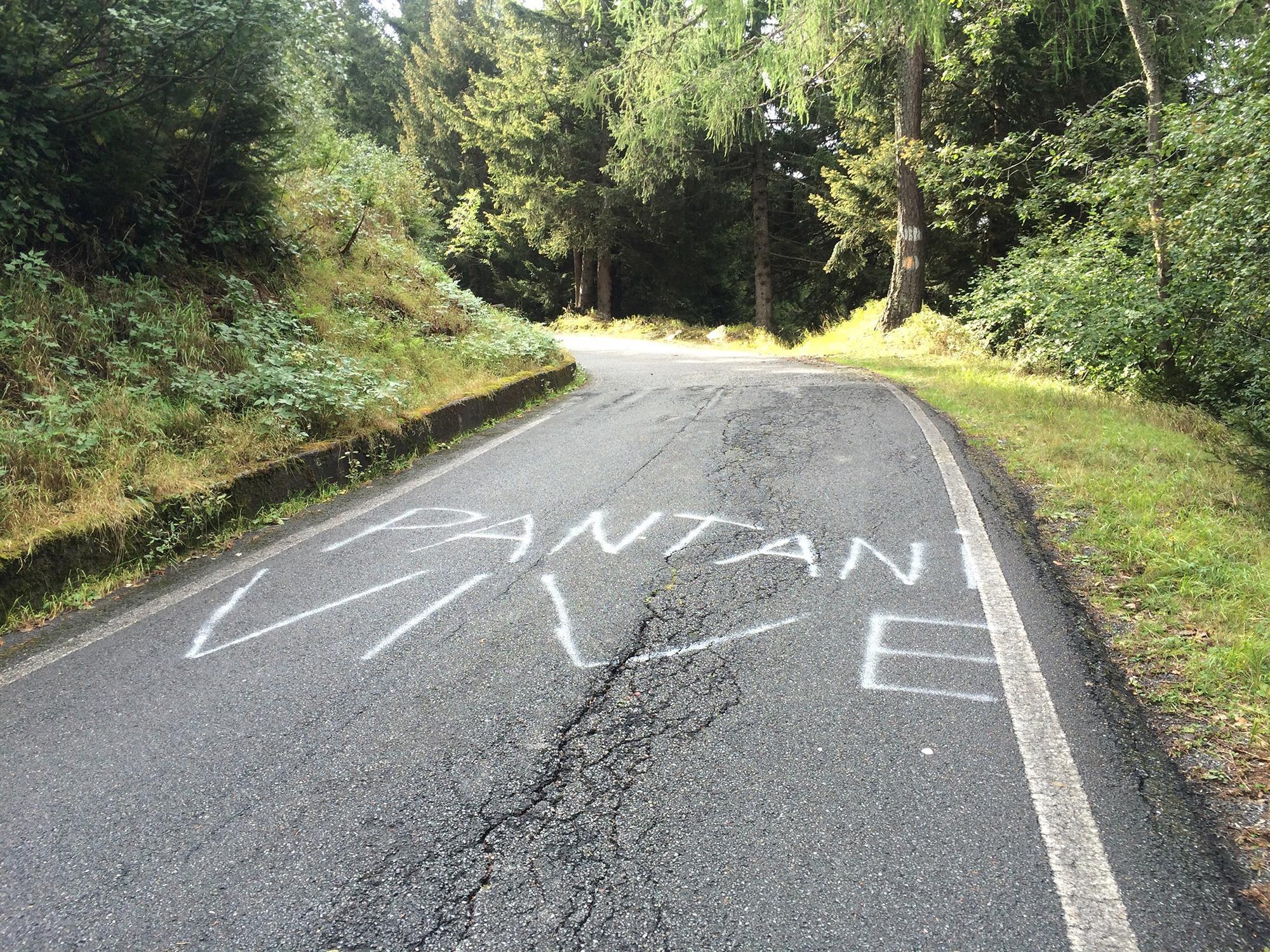 A photo I took when climbing the Mortirolo in Lombardy, northern Italy showing what fans had written on the climb in honour of Pantani
A photo I took when climbing the Mortirolo in Lombardy, northern Italy showing what fans had written on the climb in honour of Pantani
Background of the Mortirolo in the Giro
The Passo del Mortirolo ('morte' meaning death in Italian) is among the most legendary non-summit finishes as the midpoint of the Giro stages. Introduced in the Giro d'Italia originally in 1990 and featured 15 times, ridden from all three sides, predominantly from Mazzo di Valtellina.
Pantani, also known as 'Il Pirata,' was the first over the climb in 1994. He surprised the peloton and the cycling world when he rode away from Miguel Indurain and Evgeni Berzin and, at only 24 years old, went on to take the stage win. Two years after his death in 2004, the Italian Professional Riders Association installed a metal sculpture monument at the 8th kilometre mark at bend 11 in the stone wall at the road's edge. Since then, the first rider over the top has received a prize called the Cima Pantani. Other famous pros who have first reached the summit during a Giro stage include Ivan Gotti, who set the record in 42.40 and Ivan Basso.
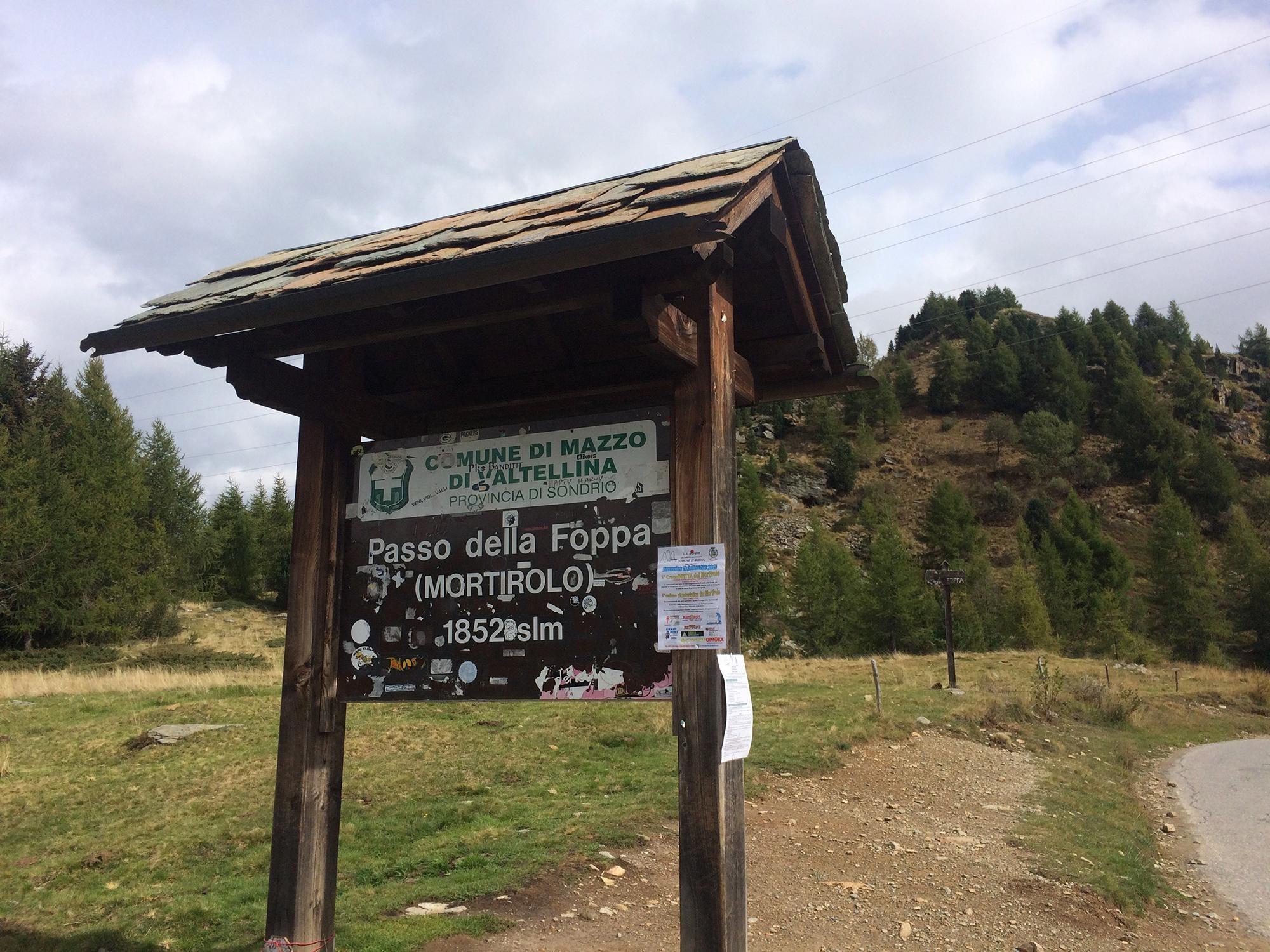 At the summit of the Passo Mortirolo from Mazza di Valtellina (Passo della Foppa)
At the summit of the Passo Mortirolo from Mazza di Valtellina (Passo della Foppa)
On ROUVY, one can find alternate routes (not from Mazzo, though) from a few other sides, including a side from Vernuga, which is not as hard as from Mazza, or from Incudine, from a side starting south of Mazza di Valtellina.
Enjoy the experience of tackling these challenging and epic climbs ridden by Grand Tours pros who made legendary marks in their battles to victories over the years. While not the longest climbs on ROUVY, these will undoubtedly leave their mark on you!
